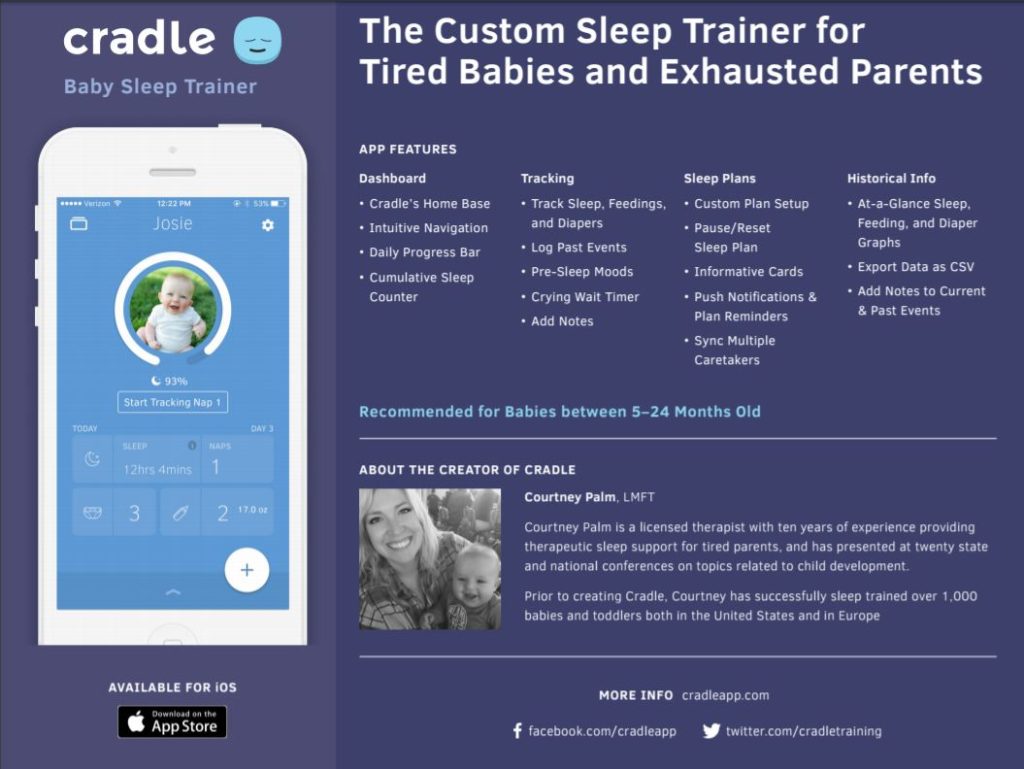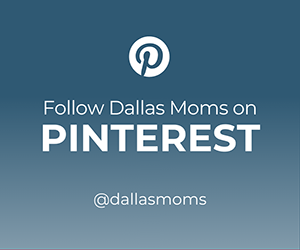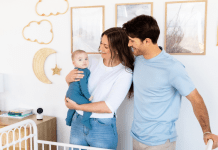This post has been sponsored and guest written by the Cradle App to bring our readers valuable information on newborn sleep. We hope you’ll find it helpful!
If you were a child of the eighties and early nineties perhaps you remember the much sought after toy, Puppy Surprise. At first glance one might assume this toy was popular because it was a cute stuffed dog with a tiny stuffed puppy inside; Wrong. This toy was a hot item for one reason and one reason only…you didn’t know what you were going to get. What would come out? One puppy, two puppies, five puppies? There were no guarantees when you opened that package.
 Sleepers or Strugglers: 0-3 months
Sleepers or Strugglers: 0-3 months
Puppy Surprise is the best comparison I have for infant sleep- some babies come into this world wired for sleep and (surprise!) some do not. I’ve had many parents tell me that they thought they had infant sleep figured out…until they had a second child and realized they knew nothing.
Even though all infants need a tremendous amount of sleep, due to a variety of factors, some are unable to consistently access it. The main reasons why babies this age have trouble sleeping are: feeding difficulty, reflux, and sleep position.
The American Academy of Pediatrics recommends all babies put on their backs to sleep- while this is safer it is not conducive to good sleep. This is why if your baby falls into this age group I recommend a “bust-proof” swaddle (i.e. zippadee zip), an elevated sleep position (i.e. rock’n’play) and monitoring reflux symptoms (elimination diet or reflux medication can help).
Moonwalkers (think Michael Jackson, not Neil Armstrong): 4-5 months
The first few months are undoubtedly the hardest for sleep but as your baby matures, develops motor skills, and gains weight parents begin to see a light at the end of the tunnel. Finally, your baby starts doing stretches of sleep where you actually begin to feel like a functioning human instead of a spit-up drenched, wild-eyed zombie. Against your better judgment, you may actually allow yourself to feel a little…celebratory. Your sleepless nights are behind you and you’ve made it to the other side!
Cue your baby moonwalking away from those long stretches back to the beginning because here comes the four-month sleep regression (yes it’s a real thing).
Suddenly your baby’s brain begins to throw all of its resources at creating new connections to support motor development, which subsequently scatters those newly formed sleep rhythms. Now your baby is back to waking frequently and eating throughout the night. PANIC!!!
This is the stage where parents desperately try anything to get those precious few hours of uninterrupted sleep back…usually to no avail. The good news is that this is just a phase, the bad news is you can create a lot of poor sleep habits during this time.
My advice is try to stay consistent with feeding schedules, incorporate some “sleep feeds” at night to limit the “wake-cry-eat-sleep” pattern, and ask for help (whether it’s parents, friends, or partners you need a way to get some rest while you ride this out).
Winner-Winners: 5-6 months
There is no sweeter sound in Vegas than the casino dealer yelling out: “winner-winner, chicken dinner!” All of the stars have aligned and every number you pick is gold. That is what happens when your baby crosses over from the four-month sleep regression to the five-month “trainable sleep age”.
Neurologically, your baby wasn’t quite ready for regulating those sleep patterns but now is the sweet spot to start getting your baby off the night feeds and into a 12-hour sleep pattern. This may happen on its own but more than likely you’ll need to implement a sleep plan.
The good news is that there are a ton of sleep training options out there. The bad news is that there are a ton of sleep training options out there. This is where parents get held up in the “analysis paralysis” phase of picking a sleep method.
My advice is to go with a plan that you feel comfortable using because consistency is always the key to sleep success. Most plans fall into the following categories: no response (staying out completely), interval response (checking in with baby), proximity response (sitting in with baby until asleep), and co-sleeping response (sleeping in a room with the baby but offering less support each night). Think about which of these responses fits with your family system and go for it!
** Shameless plug time: the Cradle Baby Sleep Trainer app offers all of these response choices when parents are building their plan.**
Motor Monsters: 7-12 months
Motor skills during the day give your baby a new way to explore his/her environment, hours of fun crawling into new rooms or pulling up on furniture, and…one would hope…better sleep because surely they’re tired from all of that moving. Well…not exactly.
New motor movements during the day are amazing. New motor movements at night are a problem.
Your baby is starting to crawl (yay!) but now she’s also trying to crawl in her little crib and bonking her head on the sides (boo). Your baby has learned to pull up to stand (yay!) but he can’t figure out how to sit down in his crib once he does it (boo). Your baby is starting to cruise/walk (yay!) and now is having a dance party in his crib at night (boo).
My advice during these phases of motor exploration is to offer a lot of motor support during the day to help with body awareness, moving from standing to sitting, and giving lots of opportunities to move so rest is more likely. However, during sleep events (nap/nighttime) I would give them space to figure it out.
Moving through the various stages of sleep can be a stressful time and because the regressions are timing up with your REM cycles it’s easy to be inconsistent. Remember that the brain learns new information through heavy repetition so if you keep changing what you’re doing then it cannot pick up a pattern.
I have parents ask me all the time, “what does ‘sleep training’ really mean?” Sleep training simply put is this: helping your baby learn new ways to fall asleep that he/she can replicate independently. Rocking and nursing to sleep are lovely experiences for your baby but as he/she gets older it also prevents being able to re-enter sleep easily.
Sleep training is not a cruel practice that causes trauma to babies (check out the new, 5-year study posted by the AAP that completely debunks that myth); it is meant to help parents teach their babies the most valuable skills in early childhood…the ability to self-sooth.
I heard a fellow therapist ask a parent: “In life our job as parents is to help prepare our kids for new experiences and challenges. So do you want to spare your child the stress now only later to find she’s not prepared to deal with it in the future?” I thought it was such an insightful way to reframe the experiences in parenting that are so tough.
So I will ask you what I constantly ask myself with my own child: Do you want to spare or prepare?

This past year, Courtney Palm – a licensed therapist who specializes in child development and pediatric sleep – developed a mobile app for iOS called Cradle Baby Sleep Trainer, which is designed to put parents in the driver’s seat by guiding them through building a personalized sleep plan. Most parents read dozens of sleep books, listen to a variety of contradictory sleep advice, and start/stop sleep plans before they ever achieve success. The Cradle app removes the “analysis paralysis” associated with sleep training by enabling parents to build a personalized sleep plan, receive step-by-step directions, and track sleep progress based on a matrix that Courtney developed from sleep training more than 2,500 babies.
To learn more about the Cradle app visit www.cradleapp.com or email [email protected]
WEBSITE :: FACEBOOK :: TWITTER :: INSTAGRAM
DOWNLOAD FROM THE APP STORE













